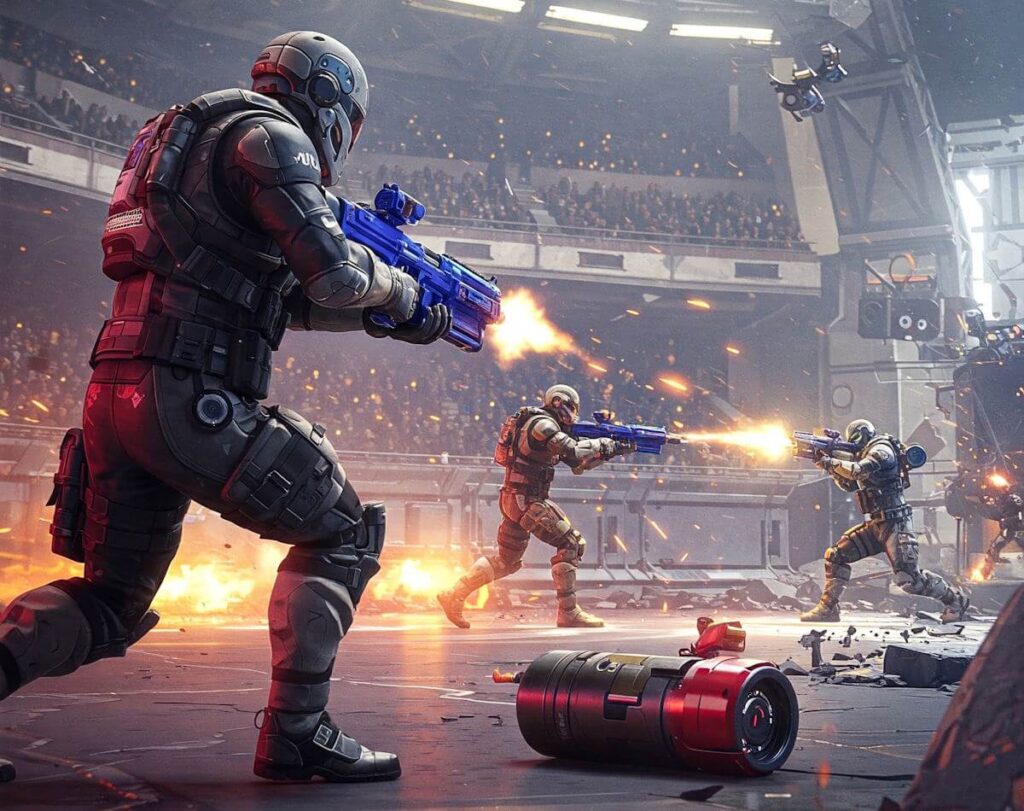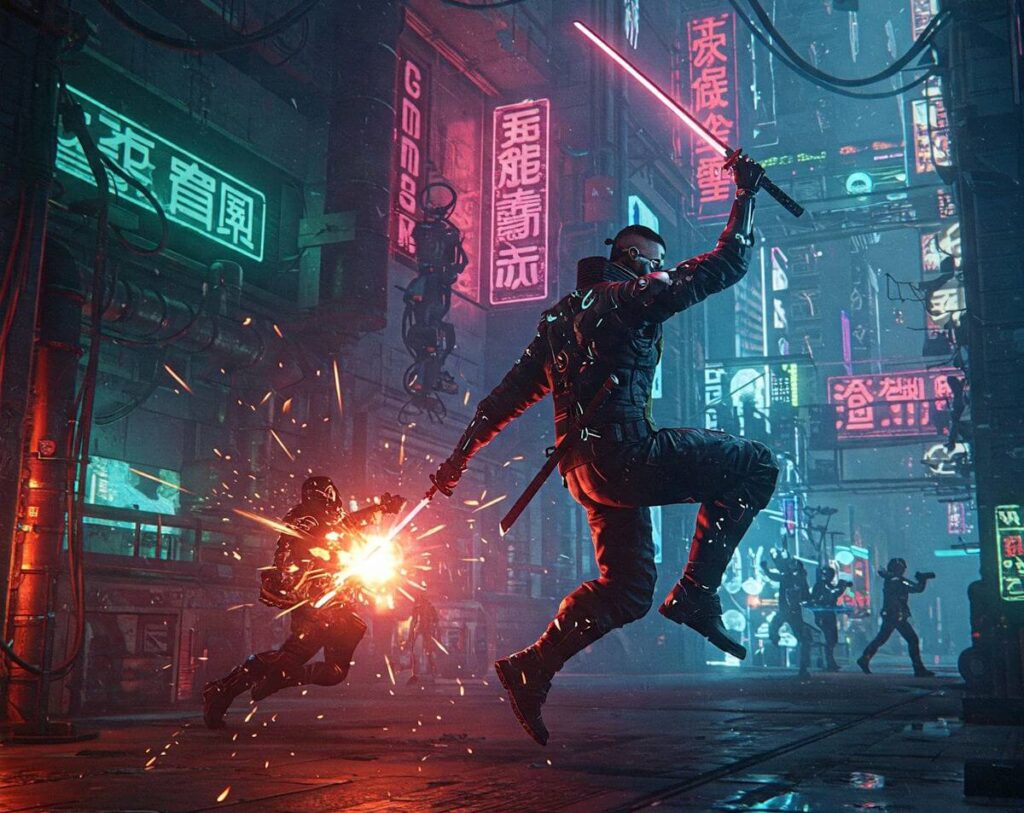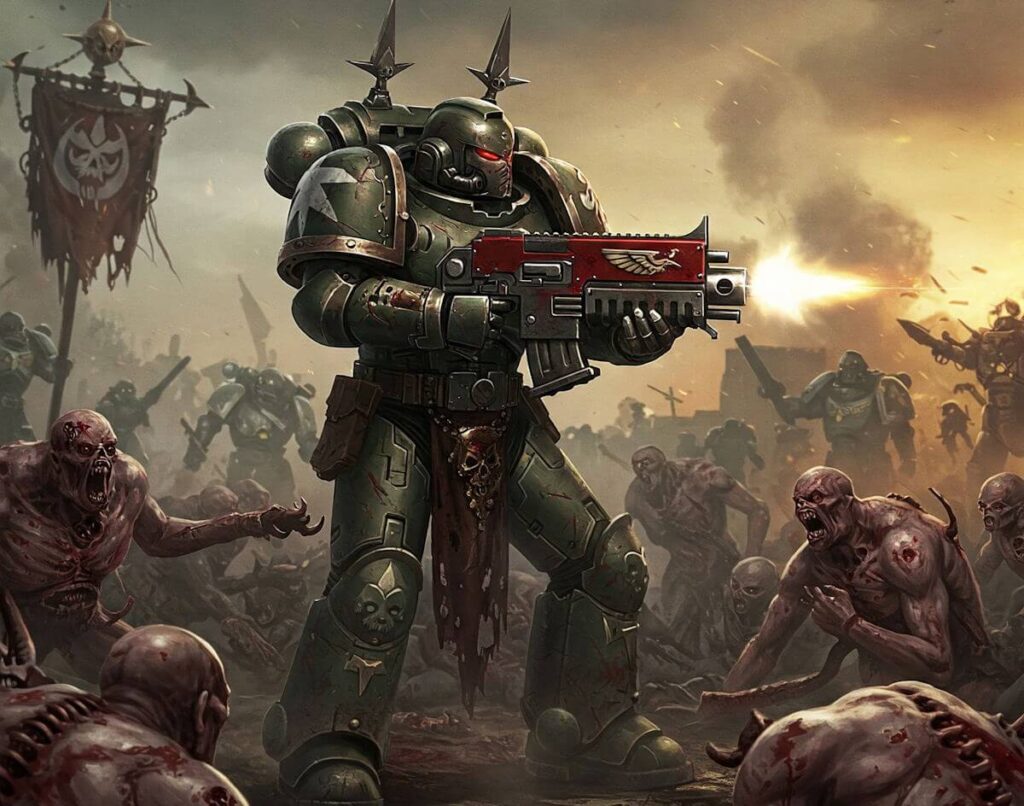‘The Finals’ is an anticipated multiplayer first-person shooter that aims to deliver an unparalleled gaming experience by blending traditional gameplay mechanics with innovative features and dynamic environmental interactions. At its core, the game emphasizes intense competition and tactical gameplay, allowing players to engage in both cooperative and adversarial scenarios. The allure of ‘The Finals’ lies in its ability to create a battlefield that feels alive, reactive, and chaotic. This immersive setting is what draws players, as they navigate through destructible environments that can change the tides of battle in an instant.
One of the game’s key attractions is its emphasis on teamwork and strategy. Players are encouraged to work together to seize objectives, manage resources, and outmaneuver opponents, fostering a sense of camaraderie that is essential for success. In addition to this, the gameplay mechanics are designed to support a diverse range of playstyles, providing both newcomers and seasoned veterans with various weapons and abilities to choose from. This flexibility allows players to find their unique approach, be it stealthy tactics or aggressive play.
The aesthetic appeal of ‘The Finals’ cannot be overlooked. Featuring high-quality graphics and stylistic designs, the visuals aim to create an engaging atmosphere that enhances the overall gameplay experience. Coupled with an electronic soundtrack, players are immersed in a world that promises both excitement and adrenaline. However, as we delve deeper into the game mechanics and player experiences, the question arises: does ‘The Finals’ ultimately deliver on its promise of chaotic battlefield experiences, or does it reduce itself to mere loudness and disarray? This discussion will continue as we explore various facets of the game in subsequent sections.
Game Mechanics and Features
The Finals presents a unique blend of game mechanics and features that contribute to its overall theme of chaotic warfare. Central to the gameplay are the combat systems that encourage fast-paced action, allowing players to engage in both ranged and melee encounters. The intuitive control scheme facilitates fluid transitions between these combat styles, enabling players to adapt quickly to varying scenarios. This adaptability is crucial in a game that prides itself on delivering an unpredictable experience.
One of the most notable aspects of The Finals is its movement mechanics. Players can traverse the environment using parkour-like maneuvers that promote verticality and speed. This feature not only enhances the sense of chaos but also allows players to outmaneuver opponents creatively. By leveraging both the terrain and their combat skills, players can engage in dynamic battles, instilling a feeling of excitement and unpredictability. However, this can lead to moments of confusion, particularly for newcomers who may find the learning curve steep.
Strategy elements also play a vital role in the overall mechanics of The Finals. Players must strategize not just in terms of combat, but also in how they utilize their environment. Destructible elements allow players to create cover or obstruct enemies, adding another layer to the multifaceted combat experience. While these features can amplify the chaos, they can also contribute to disarray if players lack a coherent plan. In essence, the mechanics serve dual purposes: promoting the exhilarating chaos of battle while demanding a strategic approach to pilot success amidst the mayhem.
It is essential to evaluate how well these mechanics resonate with players. While the chaos may initially seem overwhelming, the combination of fluid movement, diverse combat options, and environmental strategies craft a uniquely challenging gameplay experience. Ultimately, The Finals pushes its players to adapt and evolve, a hallmark of engaging game design.
Visual and Audio Design
The visual and audio design of a game plays a pivotal role in shaping the overall experience, particularly in a military-themed environment like a battlefield. When analyzing the graphics quality of the game, it is clear that high-resolution textures and detailed character models contribute significantly to immersion. Players are greeted with expansive landscapes that reflect realism; the intricate rendering of environments, such as desolate war-torn cities and lush jungles, not only captivates the eye but also serves to enhance the chaotic essence of battle. The environmental interactivity adds another layer of engagement, allowing gamers to interact with the surroundings, manipulating objects and utilizing cover effectively. This aspect of design helps translate the chaotic battlefield into a tangible experience, fostering a sense of agency and involvement.
Sound design is another critical component that accentuates the battlefield dynamics. The game’s sound effects, ranging from the distant rumble of artillery to the sharp crack of gunfire, work to create an enveloping auditory experience. The accuracy and depth of these effects can elevate the tension, drawing players into the fray. Furthermore, the background score is instrumental in shaping the emotional context of gameplay. A well-composed score can take the player on a journey, rising and falling in intensity to match the action on screen. When graphics and sound work in harmony, the result can be a breathtaking simulation of chaos, where every visual element and sound cue communicates urgency and unpredictability.
However, the challenge remains in balancing these aspects. If not executed properly, the visual and audio elements could devolve into disorganized noise rather than constructive chaos. It is essential for creators to strike a balance – ensuring that while the battlefield may feel chaotic, it is understandable and navigable. Ultimately, the synthesis of these design components determines whether the experience is one of exhilarating chaos or mere visual and auditory clutter.
Player Reactions and Feedback
The reception of ‘The Finals’ among players has been a topic of considerable discussion since its release. Many players have taken to various platforms to share their experiences, providing both commendations and critiques that illustrate the diversity of opinions about the game. These reviews reveal a complex picture regarding whether ‘The Finals’ successfully accomplishes its aim of delivering battlefield chaos or if it simply generates noise.
On one hand, a significant portion of the player base praises the game for its innovative mechanics and chaotic environments. Gamers appreciate the freedom of movement and the interactive elements that seem to heighten the sense of unpredictability during gameplay. Reviewers often highlight the fast-paced action and engaging combat that can lead to exhilarating moments, fulfilling the expectations of those seeking chaotic warfare. The variety of weapons and tactics available contributes to a unique battlefield experience that many find appealing.
Conversely, there are also notable criticisms that emerge from player feedback. Some users express frustration with the game’s balance, feeling that certain mechanics can lead to uneven experiences. Complaints regarding connectivity issues and matchmaking have also surfaced, suggesting that technical aspects may detract from the immersive chaos that ‘The Finals’ strives to provide. Additionally, some players argue that while the gameplay can be chaotic, it occasionally veers into a state of overwhelming noise, making it hard to strategize effectively during intense moments.
This mixed reception, encompassing both excitement and dissatisfaction, signals a diverse community sentiment regarding ‘The Finals.’ It indicates that while the game shows promise in delivering the chaotic battlefield action that many players desire, there are still areas that need refinement to enhance the overall experience. The ongoing dialogue among players serves as crucial feedback for developers, guiding improvements in future updates.
Comparison with Similar Games
When evaluating ‘The Finals’ in the landscape of multiplayer battlefield games, it is essential to consider how it compares to notable competitors such as ‘Call of Duty’, ‘Battlefield’, and ‘Apex Legends’. Each of these games has distinct mechanics and philosophies that contribute to their unique gameplay experiences, and ‘The Finals’ does present some intriguing points of differentiation.
One key similarity among these titles is their focus on fast-paced action and team strategies. ‘The Finals’, like ‘Apex Legends’, encourages players to adopt diverse character classes, each with unique abilities that impact the battlefield dynamics. This strategic element fosters cooperative gameplay, allowing teams to capitalize on each character’s strengths. In contrast, games such as ‘Call of Duty’ often emphasize individual skill, where personal performance can outweigh team dynamics. This is a crucial difference as it affects how chaos is created within the gameplay. The shared focus on multiplayer engagements ensures an ever-adaptive environment, but ‘The Finals’ seeks to elevate this through its emphasis on destruction and environmental manipulation.
Furthermore, ‘Battlefield’ has been known for its large-scale chaos, incorporating expansive maps and vehicle combat to add another layer of complexity. ‘The Finals’, however, opts for more confined environments that amplify the intensity of confrontations. This design choice facilitates fast engagements, fostering frantic scenarios that many players might find appealing. Such innovation may contribute to a perception of chaos that diverges from the more methodical destruction often seen in the ‘Battlefield’ series.
In this crowded genre, ‘The Finals’ presents itself as an experiment in chaos, fine-tuning elements from its predecessors while aiming to create a unique experience. The question remains whether these implementations resonate with players as effectively as those in more established titles—an inquiry that will ultimately define its place in the multiplayer battlefield landscape.
The Role of Strategy in Chaos
In the dynamic environment of ‘The Finals,’ strategy plays a crucial role in navigating the chaos that the game presents. Players are thrust into scenarios that are fraught with unpredictability, where quick thinking and immediate reactions often take precedence. However, amidst this chaos, effective strategic planning can significantly enhance a player’s performance and success rate. The interplay between strategy and chaos in this game leads to a fascinating exploration of tactical depth.
One pivotal aspect of strategy in this context is understanding the strengths and weaknesses of one’s team composition. By pooling together the unique skills of each player—whether a focus on offense, defense, or support—teams can create a collaborative strategy that maximizes their chances of survival and victory. This structured approach can mitigate the overwhelming odds presented by the chaotic environment, allowing for calculated risk-taking instead of mere reactionary play. A well-thought-out strategy serves as a framework even when the battlefield rapidly shifts, providing players with guidelines to adapt their tactics effectively.
Moreover, communication among team members becomes a key factor in executing a successful strategy. In the midst of a chaotic encounter, clear and concise communication ensures that all members are on the same page. It fosters coordination that can lead to strategic advantages, such as establishing ambush points or flanking maneuvers. On the contrary, a lack of communication may result in disarray, leading to poor decision-making that can compound the challenges of an already chaotic environment.
However, it must be acknowledged that the intrinsic chaos of ‘The Finals’ can sometimes render long-term planning ineffective. Players may find valuing adaptability over rigid strategy necessary, as unexpected changes can quickly disrupt even the most carefully laid plans. As such, while strategy is undeniably important, it must be resilient and flexible, enabling players to harness the chaos rather than be consumed by it. By striking this balance, players can enhance their overall experience and effectiveness in ‘The Finals.’
Community and Esports Potential
The emerging landscape of competitive gaming has seen a notable rise in community-centric titles that not only engage players but also foster thriving esports scenes. “The Finals,” as a new entry in this market, faces the challenge of establishing itself amid intense competition. For any game to capitalize on esports potential, its foundational design must promote sustained competitive play, while simultaneously encouraging a vibrant community.
Firstly, the game’s mechanics play a crucial role in shaping its viability as an esports contender. “The Finals” incorporates chaotic elements that add a layer of unpredictability. While this can enhance the excitement for casual players, it poses a concern regarding the establishment of a structured and serious competitive framework. Competitions require a balanced design that minimizes randomness, allowing players to showcase their skills and strategies effectively. If “The Finals” is perceived as too erratic, it may discourage serious players and teams from investing in the game, thus hampering its growth within the esports arena.
Community engagement is equally important in determining the success of “The Finals.” A strong community fosters player retention and attracts new participants. The game must facilitate interaction among players, providing avenues for collaboration and competition. Implementing features such as in-game events, community challenges, and robust social platforms can enhance player engagement. Moreover, a dedicated support system for modding and community-generated content could further deepen the involvement, promoting a culture of creativity and loyalty amongst gamers.
In summary, while “The Finals” possesses potential for community building and esports expansion, achieving this requires a careful balance between gameplay mechanics and player engagement strategies. The success of the title will ultimately hinge on its ability to create a sustainable environment that champions both competitive integrity and community spirit.
Conclusion: Battlefield Chaos or Just Noise?
After evaluating the various elements that comprise ‘The Finals,’ it is essential to reflect on the game’s ability to deliver the promised chaotic battlefield experience. From its dynamic combat mechanics to the visually stimulating environments, ‘The Finals’ certainly appeals to players seeking an adrenaline-fueled firefight. However, it is equally crucial to consider whether this chaos translates into meaningful gameplay or if it simply becomes an overwhelming cacophony, leading to frustration among players.
The concept of chaos in a battlefield environment inherently relies on the balance between unpredictability and strategy. ‘The Finals’ aims to foster an atmosphere where players can thrive in both spontaneous skirmishes and calculated maneuvers. Yet, feedback from early players suggests that navigating through this chaos often results in bouts of confusion and disorientation. Rather than an orchestrated melee, the experience can sometimes feel disjointed, making it challenging to discern tactical advantages amidst the noise.
Moreover, the community’s reception of game mechanics like destructible environments and unique character abilities has presented mixed sentiments. While these features are innovative, they also contribute to the overwhelming nature of the gameplay. As players juggle various elements, there is a fine line between engaging battlefield mayhem and mere auditory clutter that detracts from the immersive experience.
Ultimately, whether ‘The Finals’ delivers authentic battlefield chaos or devolves into nonsensical noise will depend on individual player experiences. Some may revel in the unpredictable nature of combat, finding exhilaration in the chaos, while others may encounter challenges that detract from their enjoyment. Therefore, it is essential for prospective players to reflect on their gaming preferences and how they envision their adventures in ‘The Finals’ before diving into this tumultuous environment.
Call to Action for Readers
The discussion surrounding the integration of chaos in video games, specifically in ‘The Finals,’ invites our readers to contribute their thoughts and experiences. This game has sparked diverse opinions about whether it delivers genuine battlefield chaos or merely echoes of noise. We encourage you to reflect on your gameplay experiences and share your insights with our community. How does ‘The Finals’ compare with other titles that emphasize chaotic gameplay?
As players, we often find ourselves tangled in intense moments that reshape our understanding of tactical gameplay. Whether it’s the thrill of unpredictability or the frustration of overwhelming chaos, every experience matters. We would like to know your perspective: does ‘The Finals’ masterfully embrace chaotic environments, or does it succumb to excessive disorder that detracts from the gaming experience? Your insights can help paint a comprehensive picture of how chaos is interpreted in today’s gaming landscape.
Moreover, feel free to engage in the comments section. Are there particular instances in ‘The Finals’ that stood out to you as moments of brilliance or confusion? How do you think the notion of chaos influences not only gameplay but also community interaction? By engaging in this dialogue, we can collectively explore the multifaceted nature of chaos in video games and its impact on the players’ emotional journey.
Through your contributions, we aim to foster a vibrant discussion and build a deeper understanding of chaos in gaming. Let us know your thoughts; your voice is a vital part of this evolving conversation in the gaming community. Share your experiences below, and let’s delve into the chaos together.




